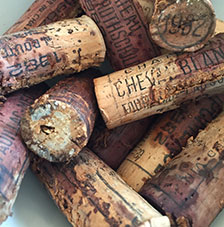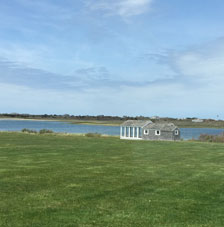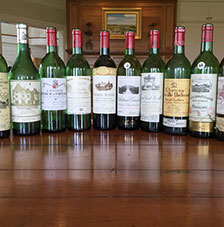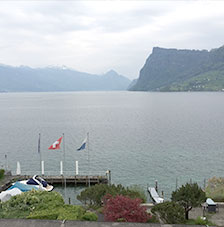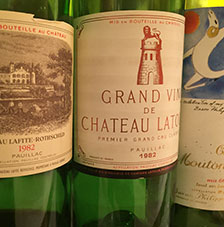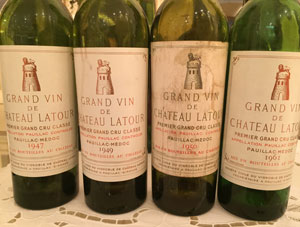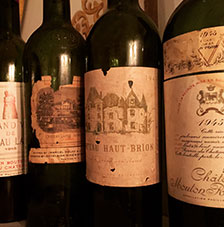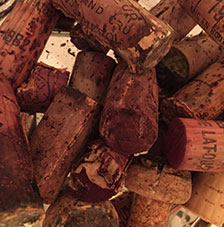Some people know how to celebrate. And when Hollywood Jef recently turned sixty, he celebrated in epic fashion. It was a DRC weekend, culminating in a sixty person BYO DRC extravaganza at his home, but I will get to that later. First, there was a warmup night, a pre-game if you will, just a casual night of Coche-Dury amongst friends.
A Hollywood Happy Birthday, Part I
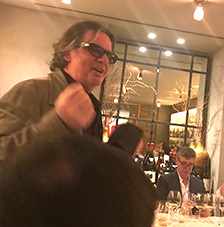
Our Hollywood Hero
We started with the 1988 Krug Clos du Mesnil. It was delicious and is generally Bruce’s favorite of Krug’s exemplary wine. This had all the yellow richness and great spice that you expect with a great Clos du Mesnil, along with cedar, smokiness and a tangy, long finish. This is one for the ages (97+).
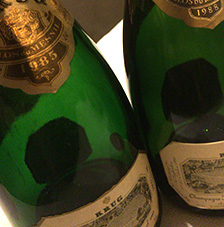
85 and 88
The 1985 Krug Clos du Mesnil was deemed ‘perfect’ by The Punisher. It was much more zippy in a leaner way, quite racy and dare I say fresher than the ’88, not that the ’88 had any problems! This wine had a great icy white personality, perhaps more suitable for my Scandanavian wine loving friends lol (95).
We quickly came to the heart of the birthday celebration, kicking things off with a 1989 Coche-Dury Meursault Perrieres. This was a bit dirty on the nose with some yellow fruit and a yeasty, alcoholic finish. The palate carried those yeasty, earthy notes over and seemed a little soft. It felt like it was still in its prime, and it got better with air, picking up some caramelly flavors. I can’t say it wasn’t disappointing though (92?).
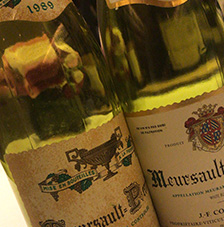
One Great, One Not
The 1989 Coche Corton-Charlemagne was corked L, but the palate wasn’t bad enough to turn me away! There were many classic components along with nutty and caramel notes there, so it got a hall pass in my mouth, wait, that doesn’t sound right. Despite its corkiness, it clearly outshined the MP (96A).
The 2004 DRC Montrachet interrupted our programming, as The Punisher couldn’t wait any longer before having a decent white, and he always has at least a couple DRC Montys packed in his ‘carry on!’ The 2004 is The Punisher’s ‘favorite DRC Monty until the 2010,’ and he added, ‘while the 2008 has a fabulous unique style, the 2004 has arrived.’ With all its fat, rich unctuous butter and white spice, this was a ‘can’t miss’ white wine. It was so rich and so buttery with DRC’s classic kiss of botrytis. Yum diddy diddy yum yum (97).
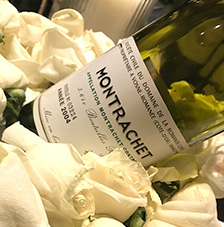
Guest Starring
We got back to those Coches with the 1996 Coche-Dury Corton Charlemagne. Now we were talking. It had a sexy, musky nose with yellow and white flowers, acacia and honeysuckle. This was elegant and super classy, but there was still meat on its bones. The Rev thought this was a little more closed than the 1995 with which it shared the flight, but neither of us could get over its insanely long and sexxxy finish. It gained in the glass and was even better at the end of the night (98).
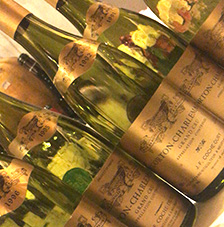
Heavy Lumber
The 1995 Coche-Dury Corton Charlemagne that followed was gamier and a touch more wheaty than the 1996 and much more open and inviting. This was all rainwater and yeast with corny, gamy fruit and a fleshier, more buttery and kinky palate (95).
Next up was the 1992 Coche-Dury Corton Charlemagne, which showed up with more rainwater and butter on its nose with that ’92 botrytis kink. It was lush, creamy, so sexy and good, with great sweetness on the palate. its sweet honey flavors made me coo, but this was still a vimful 1992 (96).
The 1991 Coche-Dury Corton Charlemagne had a bit of back alley and rainwater to the nose, but this leaner wine couldn’t compete with the other glasses around. It was a milder effort, still long on acid with nice intensity but less complexity (91).
We time warped and jumped to the 2002 Coche-Dury Meursault Perrieres, which had much ‘more sulphur’ per Bad Boy’s lady friend of the week. This was fresh and zippy with all the typicity of Coche. The 2002 MP was an outstanding and classic example of this wine, bringing this ‘premier’ cru back to the its rightful glory spot. Sorry, that should be G spot and glory…glory hallelujah! This had all the great spice and flexing acid this wine should (96).
The 2003 Coche-Dury Corton Charlemagne was simple, sugary, and a little one-dimensional. I didn’t have much to say other than ‘not my favorite vintage, especially for white’ (89).
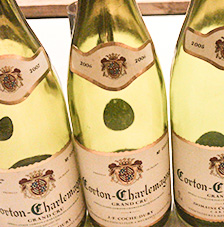
Coche Countdown
The 2005 Coche-Dury Corton Charlemage was a beauty, with all the classic Coche goodness. It had all the balanced elegance that one could hope for in a big, ripe vintage. This was all about the white fruits and ice. There was an incredible smoothness on its palate along with nice spice, minerality and a long, smooth finish (95).
I wasn’t spitting much, and it was a long day of travel involving two flights to get here, so I was starting to fade a bit. The last couple of whites (before some reds) had some snippets qualify as notes. The 2006 Coche-Dury Corton Charlemagne was ripe, tropical and clean but a little simple. Perhaps it was some palate fatigue setting in, but I still found the wine at the bottom of excellence (93).
The 2007 Coche-Dury Corton-Charlemagne drank better, with a longer finish in the classic white, icy style. This was an outstanding wine, although I am not sure it will get much better (95).
It is difficult to subsist on white wine alone, even in LA, so we were happy to see some reds, beginning with the always spectacular and pleasurable 1959 Lafite Rothschild, which had its usual super sexy cassis, cedar, pencil and so much purple fruit goodness. It was fresh and young, but The Rev felt it was lacking its usual long finish. There was a lot of tobacco and some grit to the bottle, which is still the best Lafite of all time for me, even though this rating isn’t its potential highest score (97).
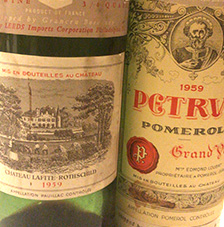
Red Red Wine
It is always nice to see a good bottle of fifties Petrus, and tonight’s was the 1959 Petrus. On this night, it was riper than the Lafite and, of course, more Pomerol-ish. It showed lots of deeper purple rain and chocolate qualities. It was chunky and oily, and it took me a while to pin down which vintage it reminded me, and then it came to me in a flash: 1970! It had that same chunky richness. There were nice curds and whey, so I obeyed (96+).
Wait! There were a couple more Coches, the young bucks, Greek Freaks if you will. We came back to where we started to close out the meal, and the 2012 Coche-Dury Corton Charlemagne delivered. Yes, it was too young, but it was sweet, sugary, and decadent, a hot chick of a wine, too young but nice to taste. Its finish really impressed me with its length; there was much more conversation to be had here than the usual hot chick lol (96).
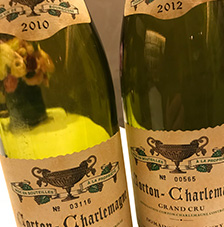
Young Stallions
The 2010 Coche-Dury Corton Charlemagne was so elegant and so long (I wrote: see previous note with The Rev and Bad Boy in LA, or did I not write that one up?). It was reminiscent of the 1996 vintage upon its release, another vintage that Coche released late, except I think that it was 1k a bottle at the time not five! It was still quite shy, but one sip had me once bitten. The wine was clean and pristine, clearly with the most potential generosity (98).
Now that was a nice warm up to the main festivities. To be continued Hollywood style!
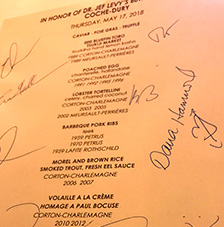
Credit Extended
In Vino Veritas,
JK

